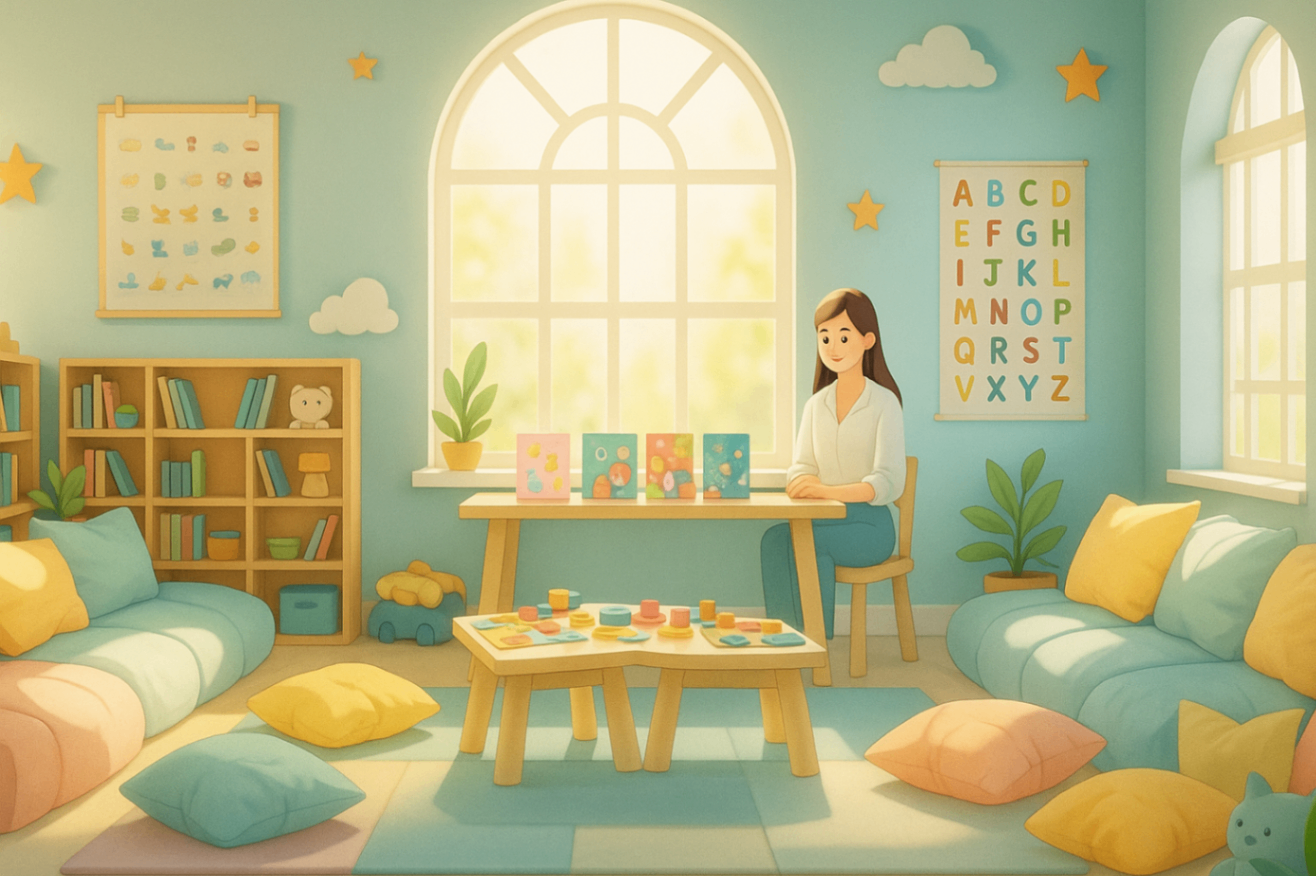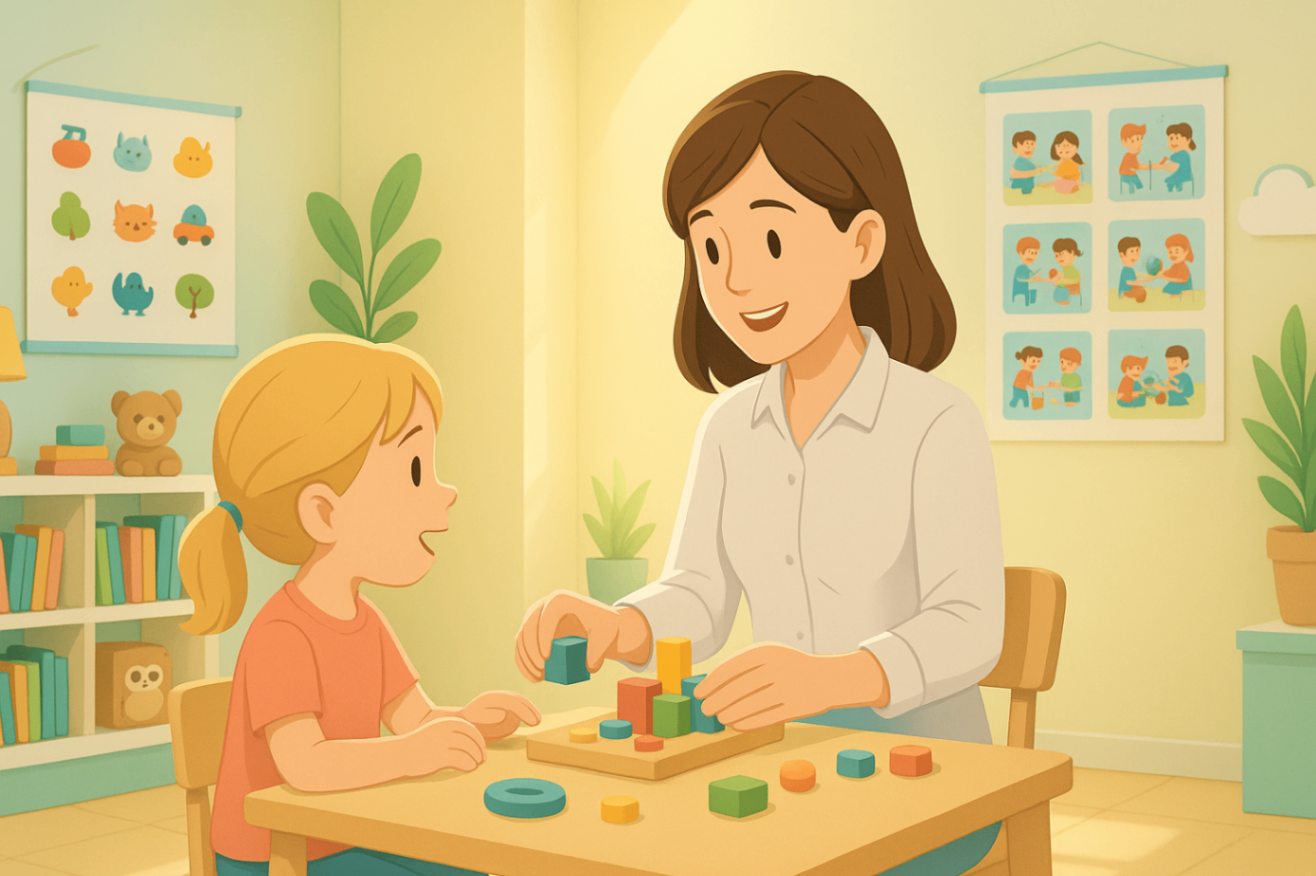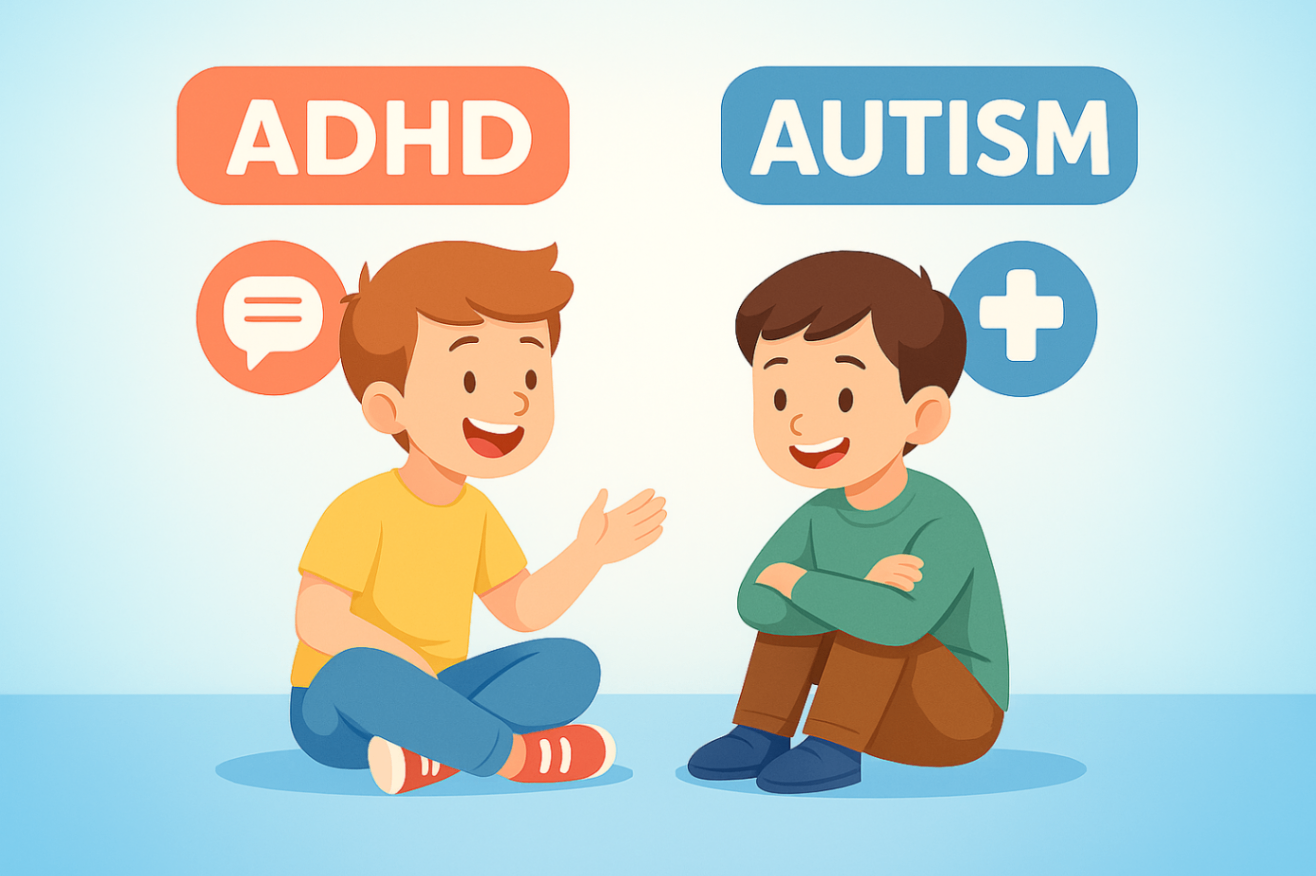
behavioural therapy for adhd children in liverpool
13 June, 2025
 Key Highlights
Key Highlights
-
Behavioural therapy is a well-known way to help manage ADHD symptoms in both young and older children.
-
It focuses on stopping negative behaviours and helps to build positive behaviour and good habits at the same time.
-
This therapy helps kids get better at handling their feelings, building social skills, and being ready for school.
-
Parents and teachers are important as they help improve communication and guide kids’ behaviours when used with therapy.
-
Treatments are different for ADHD and autism spectrum disorders since these conditions have their own needs.
-
In Australia, families can get help with costs through the NDIS. This support lets more people—including those in Liverpool and nearby suburbs like Casula, Prestons, and Moorebank—access the care they need for their child with ADHD.
Introduction
Living with attention deficit hyperactivity disorder (ADHD) can be hard. It can be tough for the child and for their family. Behavioural treatment therapy is a big part of mental health care. It gives kids ways to deal with their behaviour. It also helps them work through how they feel. NDIS-supported behavioural therapy for children diagnosed with ADHD can learn to slow down before acting. They can learn what to do when they feel angry, or have trouble at school. The main goal is to help the child to start making better choices and find new ways to cope. A parent who wants their child to feel good and grow often goes to behavioural treatment therapy for ADHD. This kind of help can make a big difference in a child's life and their mental health.
What Is Behavioural Therapy for Children with ADHD?
 A therapist helps a child with ADHD using behavioural therapy. This therapy is about changing actions. The therapist may use rewards and praise to do this. The goal is for the child to have better self-control, to manage impulsivity, and to grow their social skills. This helps the child act in a positive way at home, in school, and in other places. Behavioural therapy is a good way to help children with ADHD show positive behaviour and feel better.
A therapist helps a child with ADHD using behavioural therapy. This therapy is about changing actions. The therapist may use rewards and praise to do this. The goal is for the child to have better self-control, to manage impulsivity, and to grow their social skills. This helps the child act in a positive way at home, in school, and in other places. Behavioural therapy is a good way to help children with ADHD show positive behaviour and feel better.
Benefits of Behavioural Therapy for ADHD in Children
Through behavioural therapy, young children and older children with ADHD can learn new social skills. They also find better ways to handle their feelings. This therapy uses positive reinforcement to help a child stop negative behaviours. It shows the child better actions to use instead. A treatment plan made for each child gives them what they need to work through daily life. They can also talk with other people in a better way. Behaviour therapies can make a child feel more strong and able to bounce back. The support also helps the child's mental health. Parents get tips so they can help their children make better choices each day.
Improves Focus and Reduces Impulsivity
Children with inattention often act impulsively, making it challenging to make positive choices daily. Behavioural therapy teaches children how to stay calm and improve their focus. A therapist observes the child to identify triggers for impulsive actions and helps them develop simple strategies to break these behavioural difficulties early on. As children learn to concentrate better, they also enhance their coping skills, allowing them to think before acting.
Demonstrating appropriate behaviours or role-playing potential outcomes can show children their progress in managing behavioural issues. Parents who participate in therapy play a crucial role; collaboration among the child, parents, and therapist helps set goals that foster lasting behavioural change.
Behavioural therapy equips children with skills for better attention and decision-making, benefiting them at school and socially. With strong support, children become more resilient and prepared for new challenges.
Helps with Emotional Regulation
Children with ADHD often struggle with strong emotions, especially when mood disorders are present. These emotional challenges can lead to tantrums, which may escalate under stress. Behavioural therapy is an effective approach for both the child and their family. A therapist guides the child in managing stress and navigating difficult situations.
In therapy, they work together to transform intense moods into calmer responses, practicing how to react appropriately in social settings. A key focus is helping the child recognise early signs of distress, allowing them to intervene before emotions escalate.
Positive reinforcement plays a vital role; children receive praise or small rewards for maintaining composure, encouraging continued effort. Parental involvement is crucial for lasting change. Training programs equip parents to support their child's progress at home, fostering continuous growth beyond therapy sessions.
With behavioural therapy, positive reinforcement, and family support, children with ADHD can learn to regulate their emotions and cope more effectively with life's challenges.
Encourages Positive Social Behaviour
Interaction is very important for a child, especially for those who have ADHD. But to learn good social skills, you need time and practice. Behavioural therapy helps children build better communication skills. It helps them know how to talk with their friends and adults in a better way. A child learns not to act out with anger or feel very shy. Instead, the child learns to use teamwork and to work with other people. This makes their social skills and their way of talking much better.
Kids learn social skills in therapy when they practice acting out everyday situations with the therapist. They also use different ways like applied behavioural analysis. The child and the therapist work on simple things, like sharing toys or solving problems after an argument. The therapist helps the child practice positive behaviour so, over time, it becomes a normal part of what they do.
Parents play a big role in helping a child learn new skills. When they keep supporting good social activities at home, the child begins to see that these new skills are important. Over time, this gives the child more confidence. The child gets to see how to make healthy and good relationships by looking at these habits at home. This can help the child in many ways as they grow up.
Enhances Academic Readiness and Learning Skills
Helping a child get ready for school is a big part of behavioural therapy. This is important because many kids with ADHD find learning hard to keep up with. Therapists work with the child to teach new skills. The new skills fit what the child can do well. Some of these skills are about how to organise tasks, follow instructions, and pay attention to the details. This helps the child feel better about learning and makes it easier for them at school.
The main part of this work is to look at how the child acts. There are plans to help find problems like inattention or acting too fast without thinking. These problems can get in the way of good study habits. When the child uses positive ways to deal with things, they start to use these new skills every day.
Role-playing what goes on in the classroom can help the child. This way, the child can join what they think with what they do in school. As they get more ready to learn and be in school, the child can see their value and go further in school.
ADHD vs Autism: Understanding the Therapy Differences

People with ADHD and autism spectrum disorders can look like they show some of the same actions. But, the ways to help people with ADHD and autism are not the same.
Key Goals of Behavioural Therapy for ADHD in Children
The main goals of behavioural therapy for ADHD are to help each individual child make real progress. Children in this therapy often show fewer behavioural challenges and improve their ability to think and respond more calmly. Kids also develop stronger emotional bonds, helping them feel closer to family and friends. Methods like cognitive behavioural therapy (CBT) are used to achieve these outcomes by giving each child the tools they need to thrive.
Whether your family is based in Liverpool or surrounding suburbs, including Ashcroft, Austral, Badgerys Creek, and Busby, the goal remains the same: to support your child’s unique growth journey. When families actively participate, the child remains at the centre of the process. Every goal met is a sign the plan is working — preparing the child for a confident and independent future beyond therapy.
Unique Needs and Approaches for ADHD
Each child with ADHD acts in their own way. Therapy is made to fit what the individual child needs. It does not use just one way for everyone. For example, if the child deals with inattention, people can change talks and practice for that child. This makes the sessions focus on effective communication. It helps the therapy work better for the individual child.
Behavioural interventions can sometimes be strict, like when talking with a therapist, or they can be open, such as when using ABA. A therapist will always try to look for new and better ways to help with behaviour. A child with ADHD can have signs that are not the same as another child. So, the therapist will need to change what they do to match what each child needs.
Parents help a lot in therapy by working together with the therapists. They keep things going in the right way, and this makes it easy to use therapy plans at home. The feedback from parents shows how the therapy matches what each individual child with ADHD needs.
Techniques Used in ADHD Behavioural Therapy
There are many ways used in ADHD therapy. Each one helps a child’s behaviour in its own way. Cognitive behavioural therapy, or CBT, is a form of talk therapy that helps a child notice how they think. It helps the child take bad thoughts and turn them into good ones. Parent management training brings parents, families, and therapists together. Working together as a team is important. This will help everyone see real change.
Applied Behaviour Analysis, or ABA, is about using positive reinforcement to help a child. This means when the child does the right thing, they get something good. It is a way to help them do good things again and not repeat things that are not wanted. Behaviour analysis is there to make sure the child learns skills that they will use in life.
When you put these skills to use at the same time, a therapist can help a child who has impulsivity, inattention, or behavioural disorders. The therapist also helps with hard feelings. This type of behavioural therapy helps a child feel sure and good about themselves, even long after the therapy is over.
Our approach uses structured strategies tailored to each child’s behavioural needs. These methods are often part of a broader specialised behaviour support plan, which can lead to long-term improvements in emotional regulation and learning.
Conclusion
In short, behavioural therapy offers children with ADHD a structured and supportive pathway to improve focus, manage emotions, and develop healthy social skills. Therapies such as cognitive behaviour therapy (CBT) and Applied Behaviour Analysis (ABA) are tailored to suit each child’s individual needs—empowering them to thrive at home, in school, and in everyday life.
Understanding how ADHD differs from autism helps create more effective, child-centred strategies. If you're looking for support, behavioural therapy is available locally through trusted providers like daar. Families in Liverpool, Casula, Moorebank, Prestons, Hinchinbrook, Green Valley, Edmondson Park, Carnes Hill, Chipping Norton, Wattle Grove, Austral, Miller, Lurnea, West Hoxton, Middleton Grange, Heckenberg, Busby, and Warwick Farm can all access high-quality ADHD therapy services within close reach.
Ready to get support for your child’s ADHD? We can help develop a personalised plan that meets your child’s needs.
Book your consultation now or call us today to take the first step toward positive change.
Frequently Asked Questions
What is behavioural therapy for children with ADHD?
Behavioural therapy is a way to help a child with ADHD by changing some behaviours. The main goal is to help the child build better social skills and learn how to manage their feelings. With this kind of therapy, a child can get new habits that can lower problem behaviours and make each day go better. Making these changes gives the child a better place to grow and feel good. Behavioural therapy uses clear steps and rewards, so the child finds it easier to do well at home and with others.
How does behavioural therapy work for kids with ADHD?
Behavioural therapy helps the child who has ADHD by giving them ways to focus better and stop rushing into things. In this therapy, the therapist works with the child as a team. They set clear goals together, reward good actions, and teach how to handle tough times. This approach helps the child learn to have more self-control. It also helps the child feel more confident. Over time, the child can do better at home, in school, and in other parts of their life. Behavioural therapy gives the child tools to deal with hard moments of ADHD and supports their day-to-day needs.
Is behavioural therapy available through the NDIS in Australia?
Yes, you can get behavioural therapy for ADHD in children through the NDIS in Australia. Families that are eligible can have support to pay for these services. The NDIS can help kids with ADHD learn new skills and better handle their symptoms. With help from trained experts, children get the extra care they need.
How much is behavioural therapy for kids in Australia?
The price for behavioural therapy for kids with ADHD in Australia can change a lot, depending on where you go. A session will usually be between AUD 200 and AUD 250. The cost depends on things like how much experience the therapist has, the place you visit for therapy, and if your health insurance can help pay for it.
How do I get therapy for my child?
You can get help for your child with ADHD by speaking to a child therapist or psychologist who specialises in ADHD treatment. A referral from your GP is a common starting point. You can also connect with your child's school or local community services for additional support.
If you're based in Liverpool, there are several trusted therapy providers — including daar — that offer ADHD-specific programs, including CBT and ABA approaches tailored for children. Starting therapy early can make a meaningful difference, helping both your child and your family work through challenges with the right tools and structure. Early support improves outcomes and ensures treatment plans are well-matched to your child’s unique needs.
.svg)












